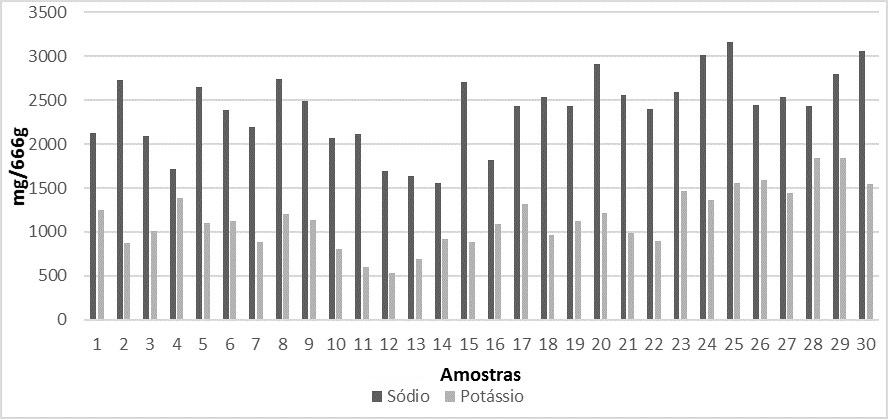Abstract
The objective of this study was to determine the levels of sodium (Na) and potassium (K) in meals served in a university restaurant in the southern region of Brazil, using atomic emission spectrometry as the analytical method. Thirty samples of lunch and dinner meals were collected from a university restaurant, referring to 131 different menus in a single semester (four months), taking into account the consumption of all food offered on the menu, including the juice and seasoned salad. The results showed that the average Na content in a meal exceeded the daily limit recommended by the Word Health Organization (WHO) in 25 of the 30 samples analysed. Higher levels were observed in meals including some kind of processed food, such as sausages and potato sticks, or traditionally spiced dishes such as one known as ‘barreado’. The lowest Na levels were found in menus including fried potato or egg. The K levels found in 19 meals could be considered satisfactory according to the WHO recommendations, but taking into account that the consumption of K should be 1.75 times greater than that of Na in the same meal, the supply of potassium was low in all the samples analysed.
Keywords:
Sodium; Potassium; Meals; University restaurant

 Thumbnail
Thumbnail
